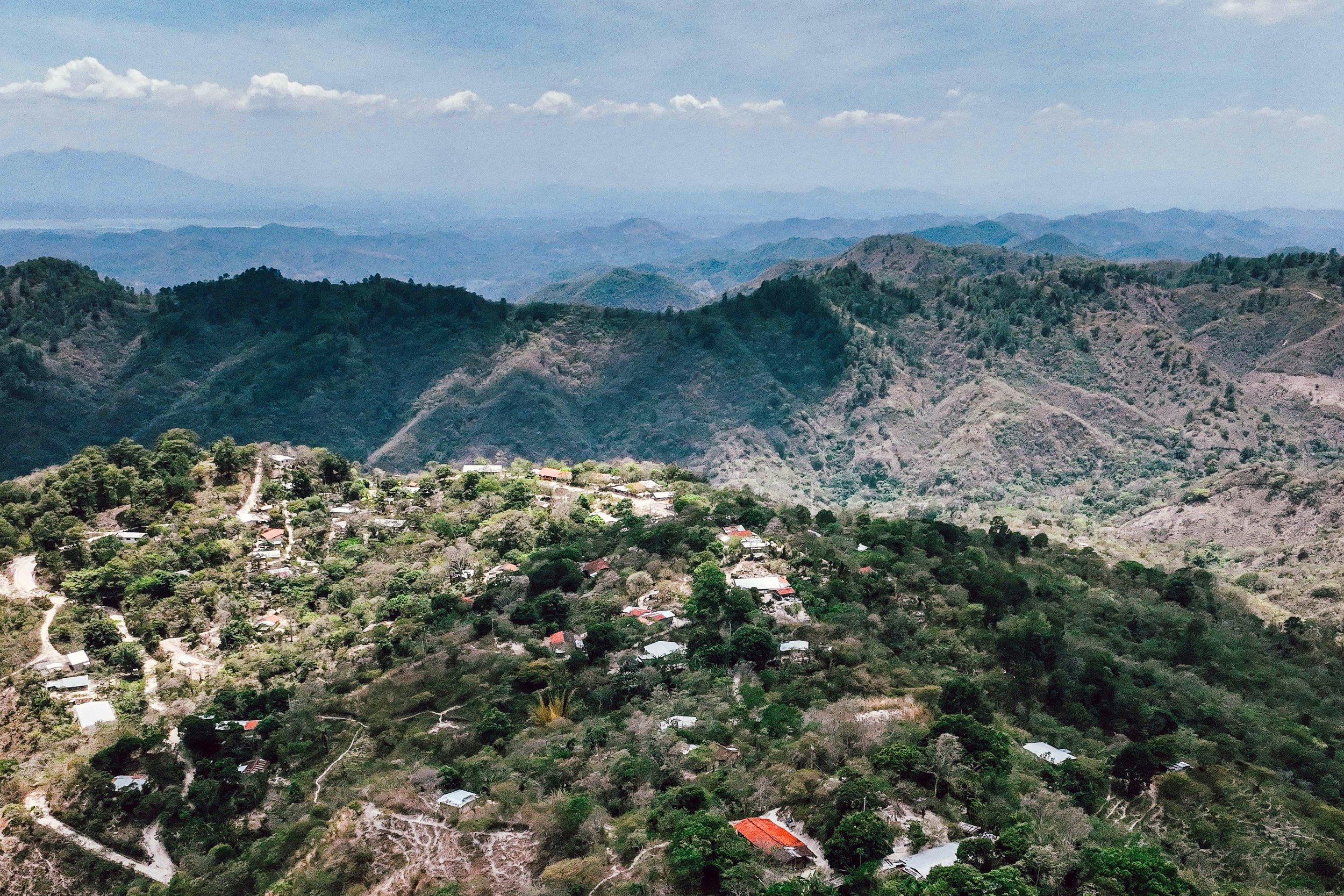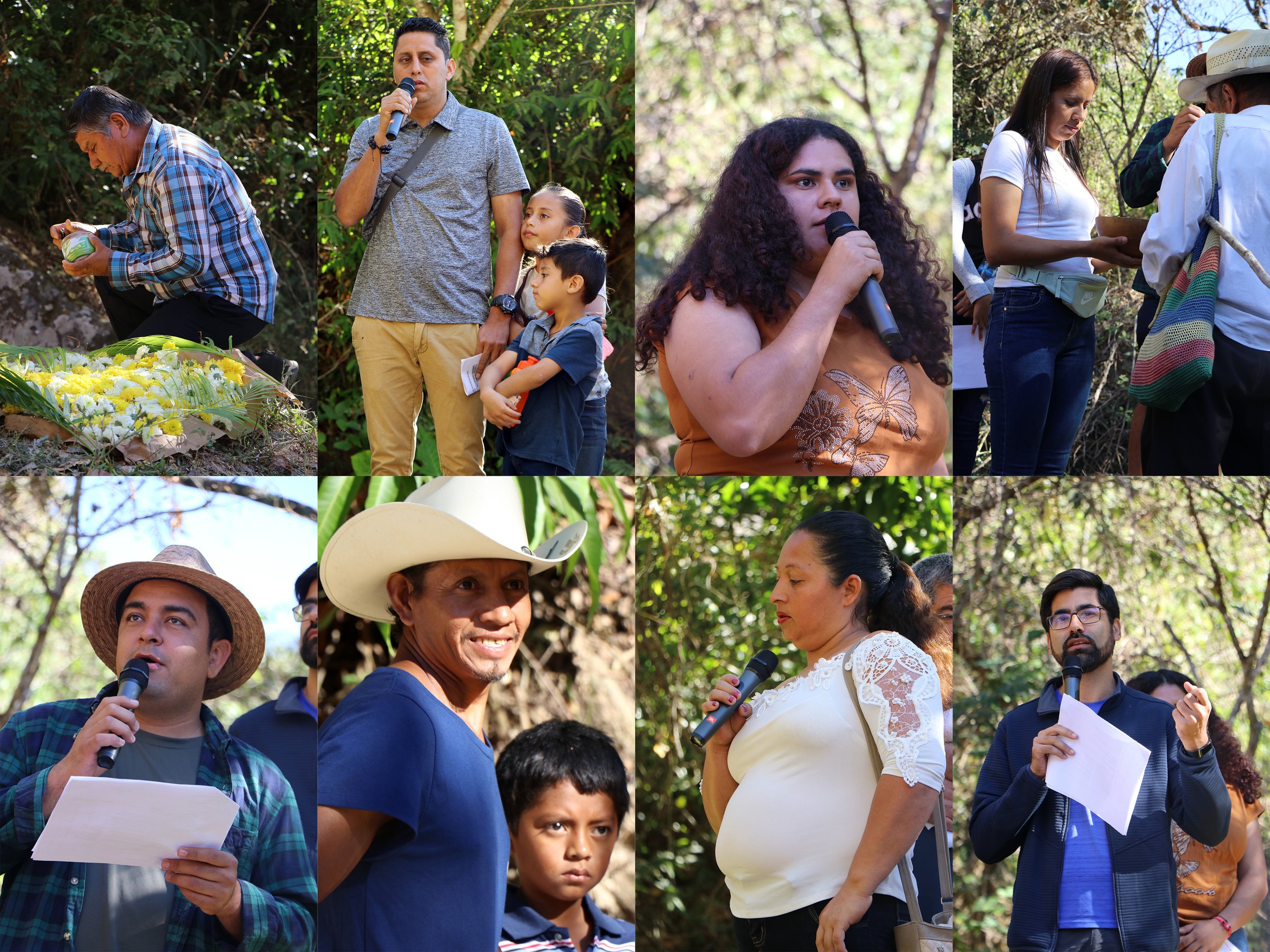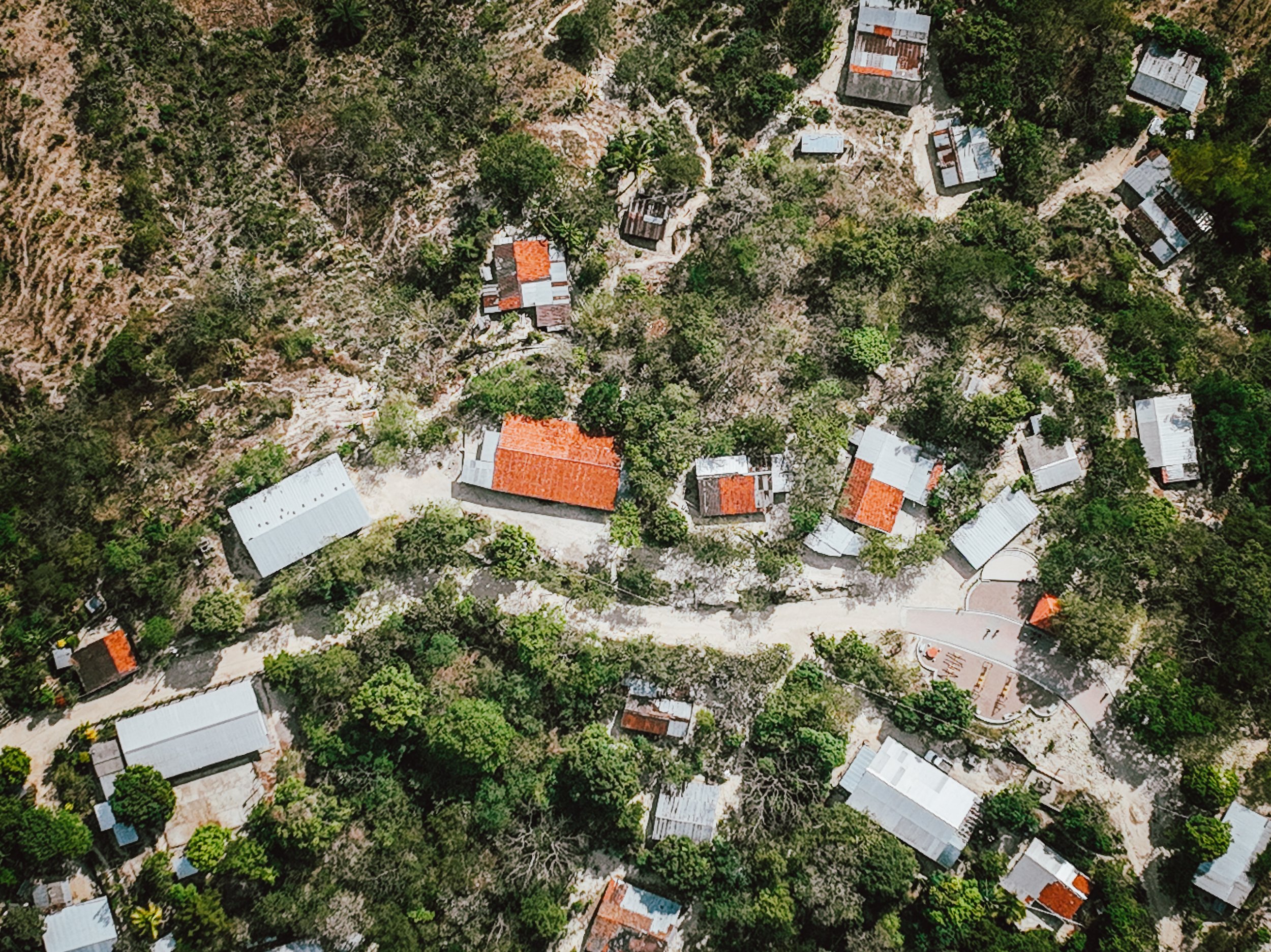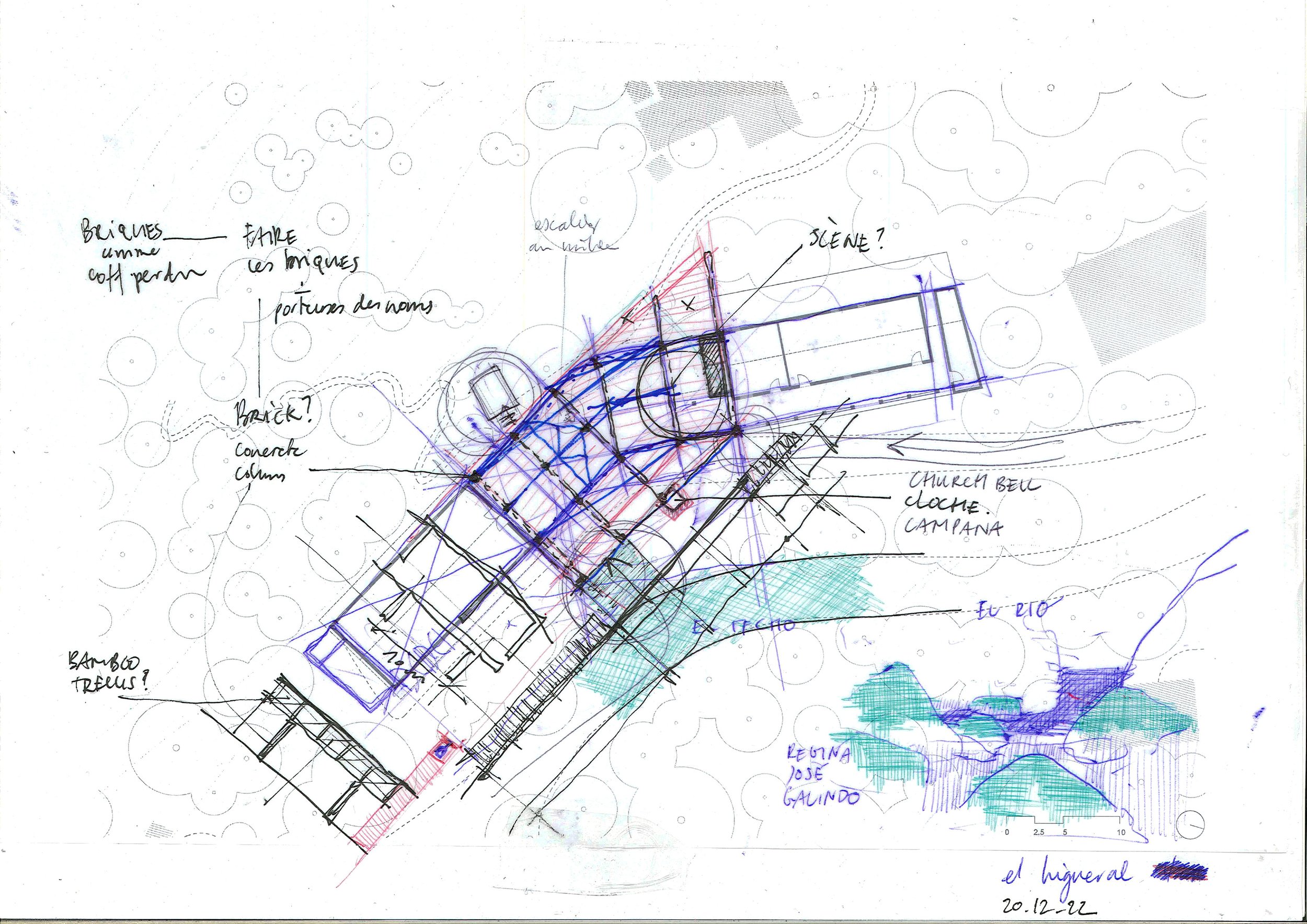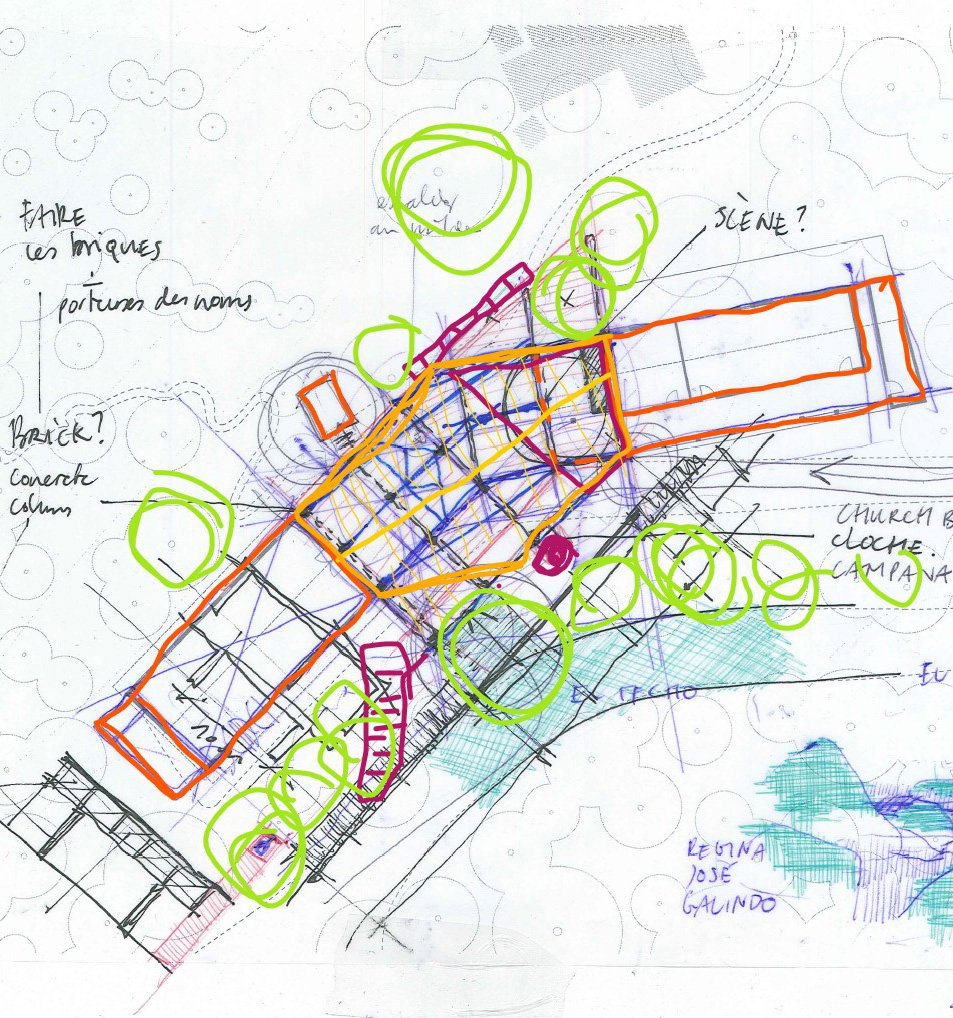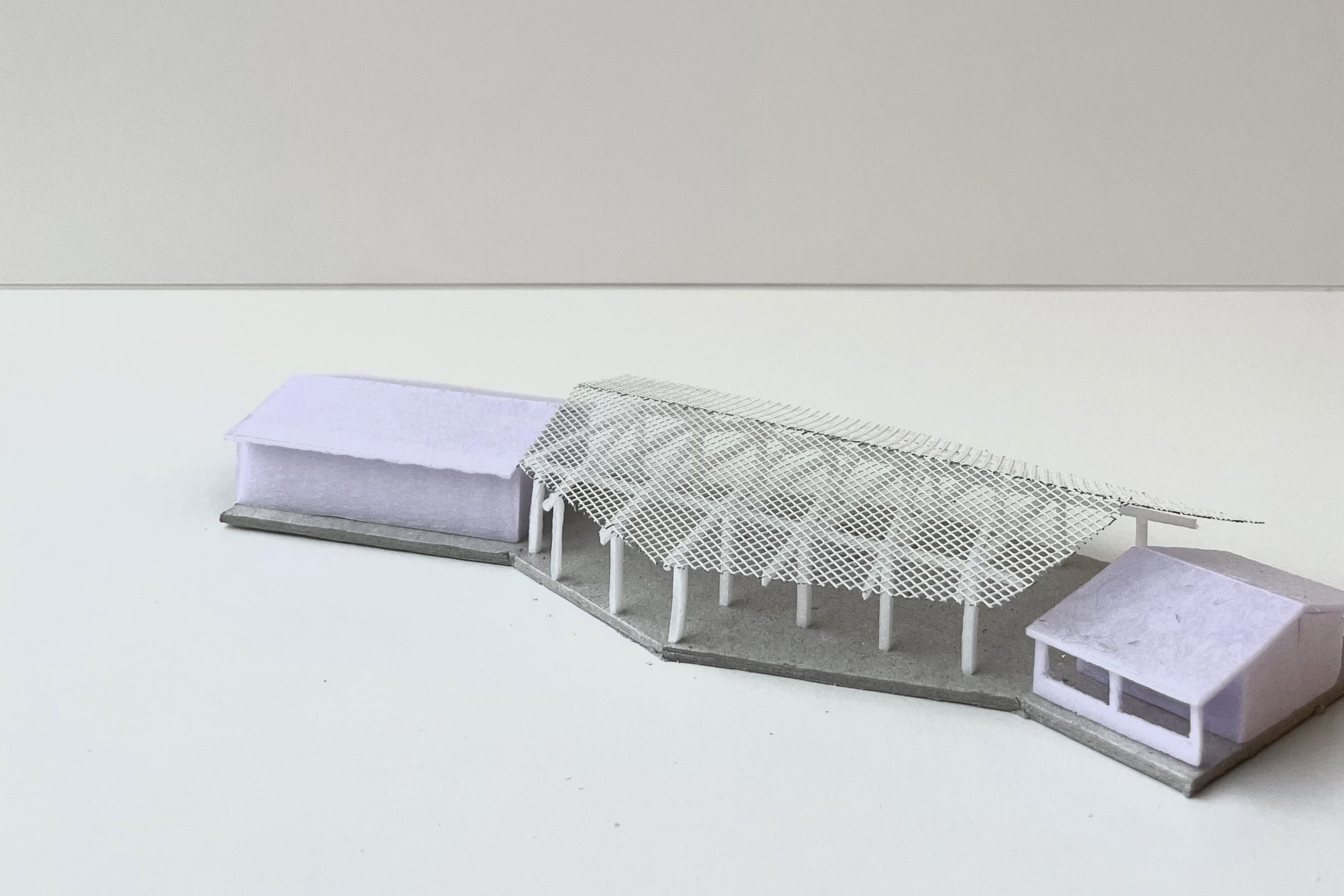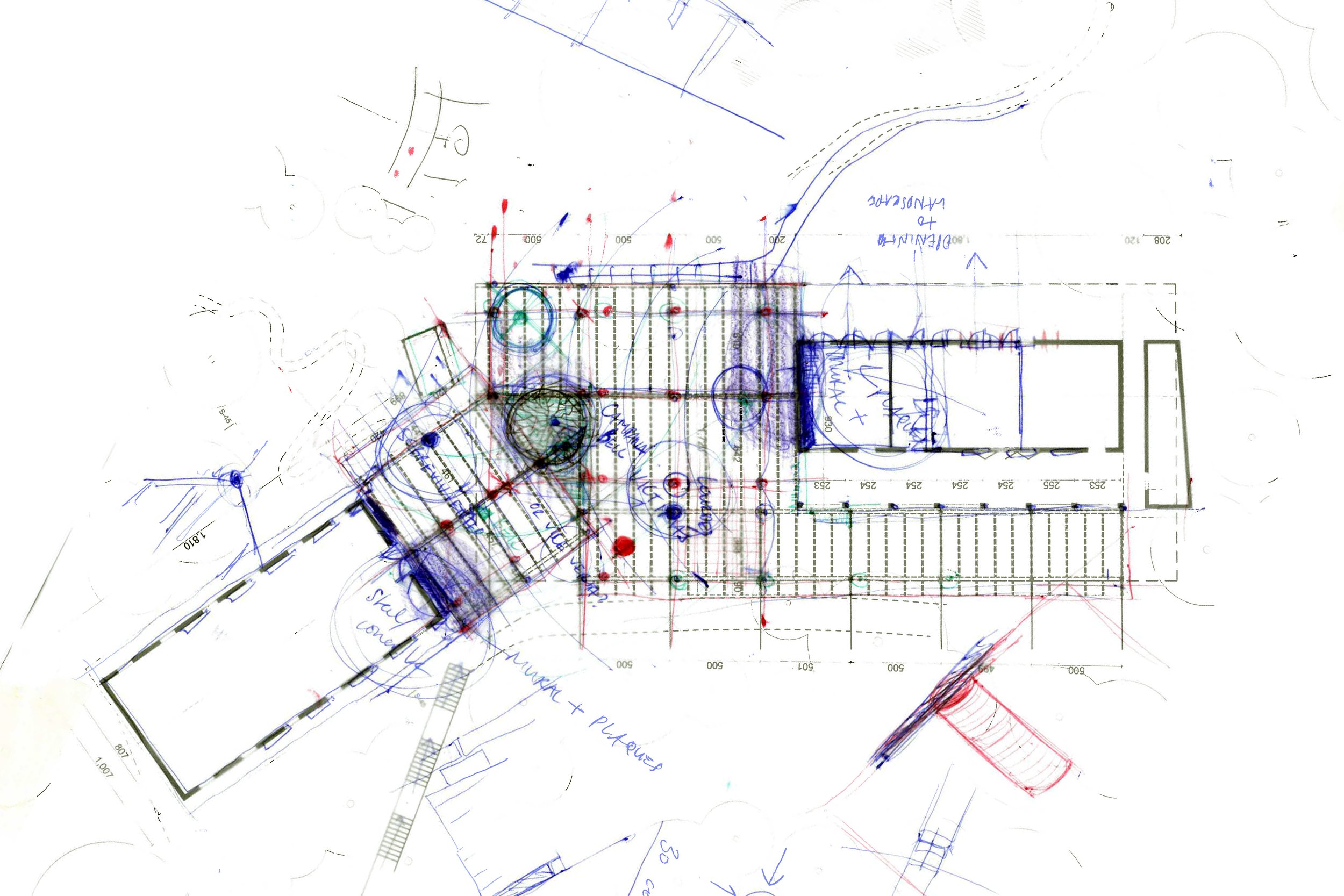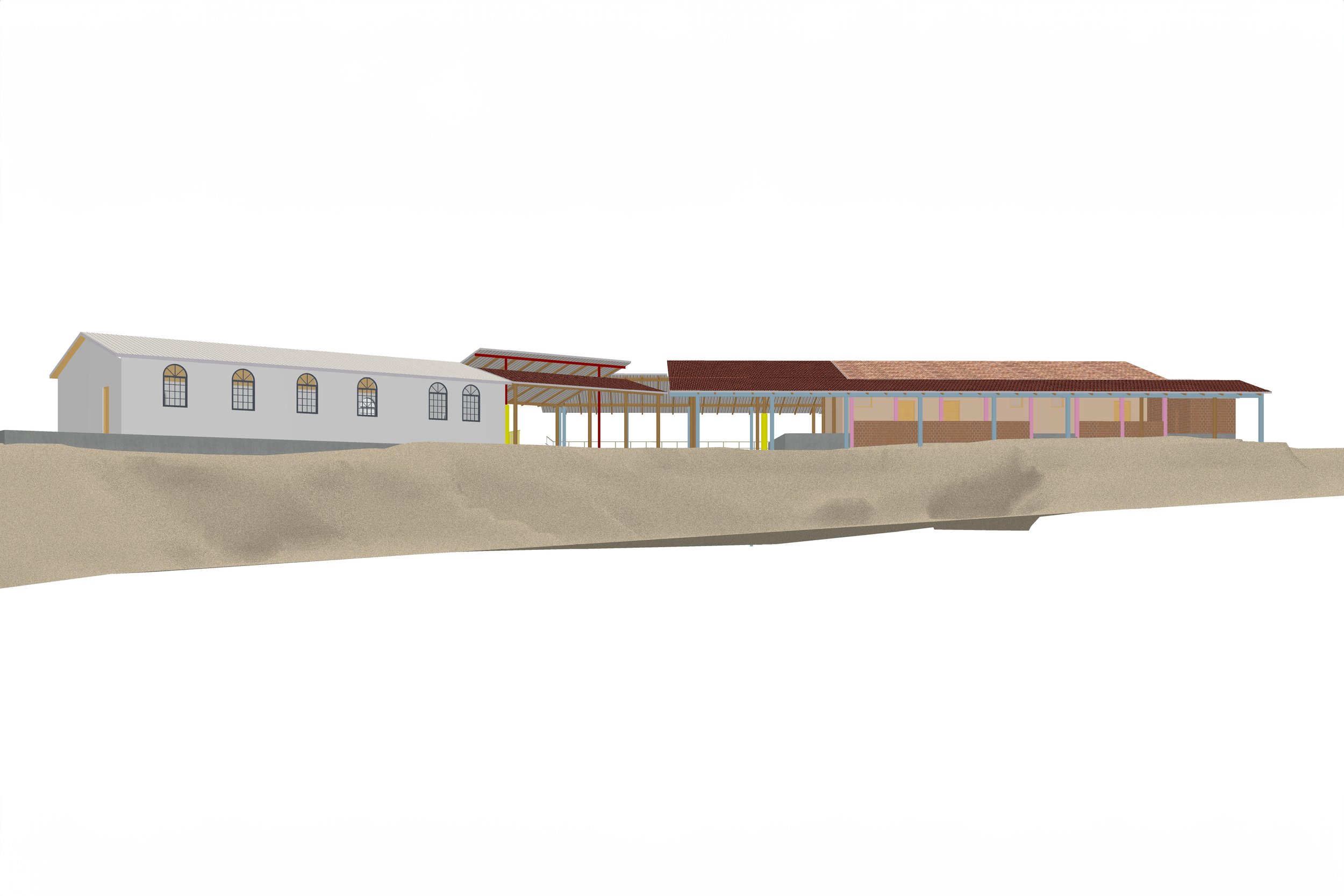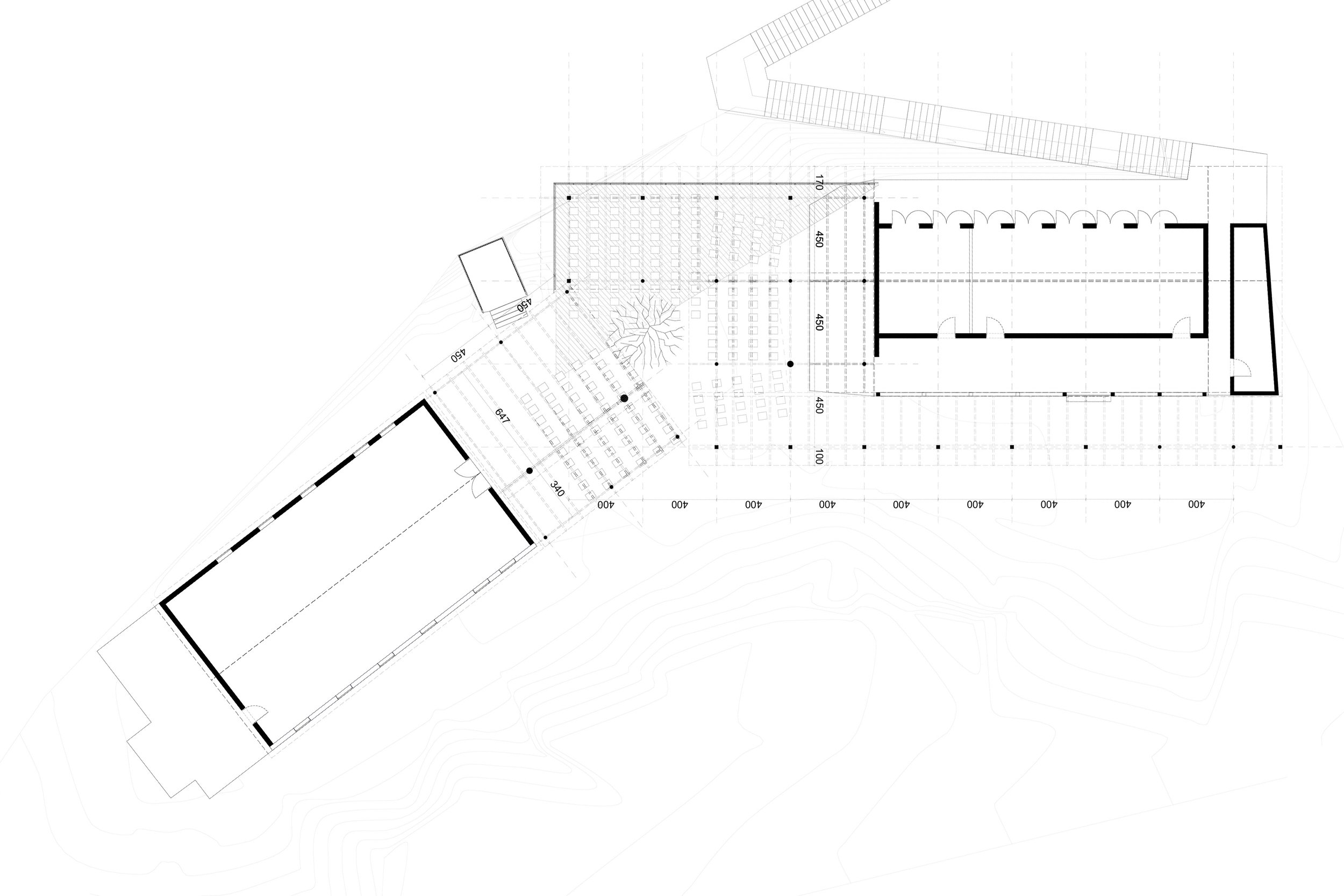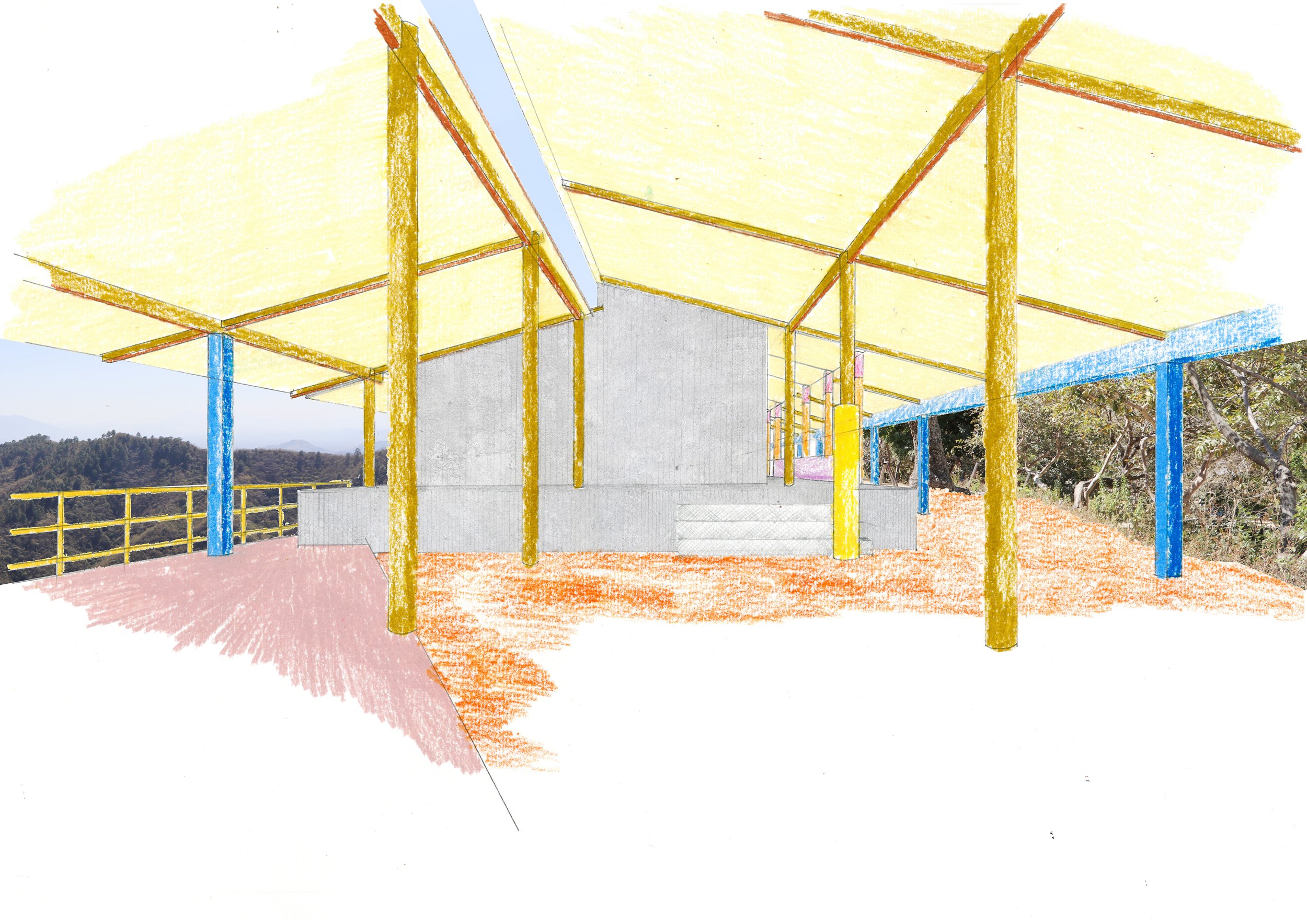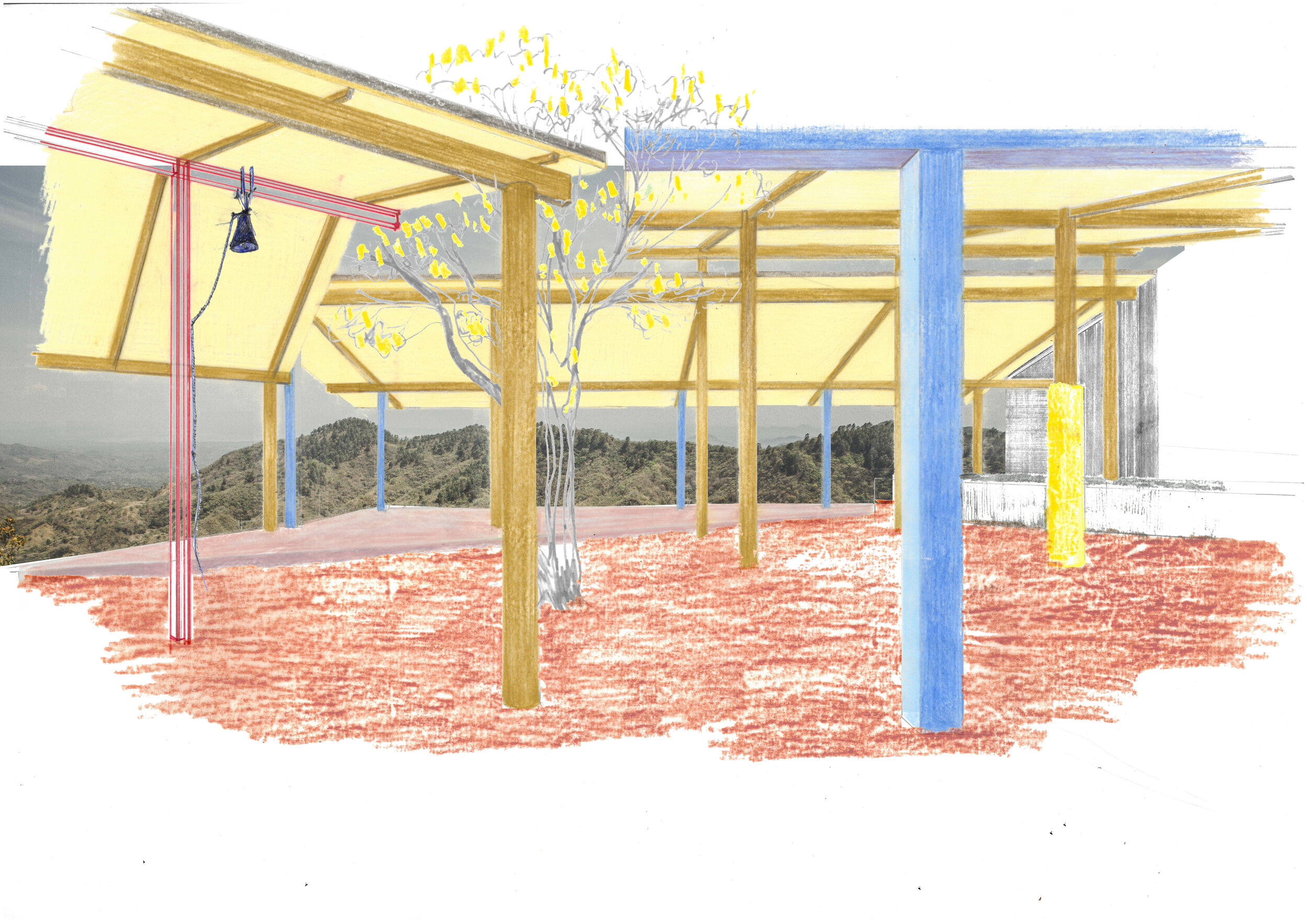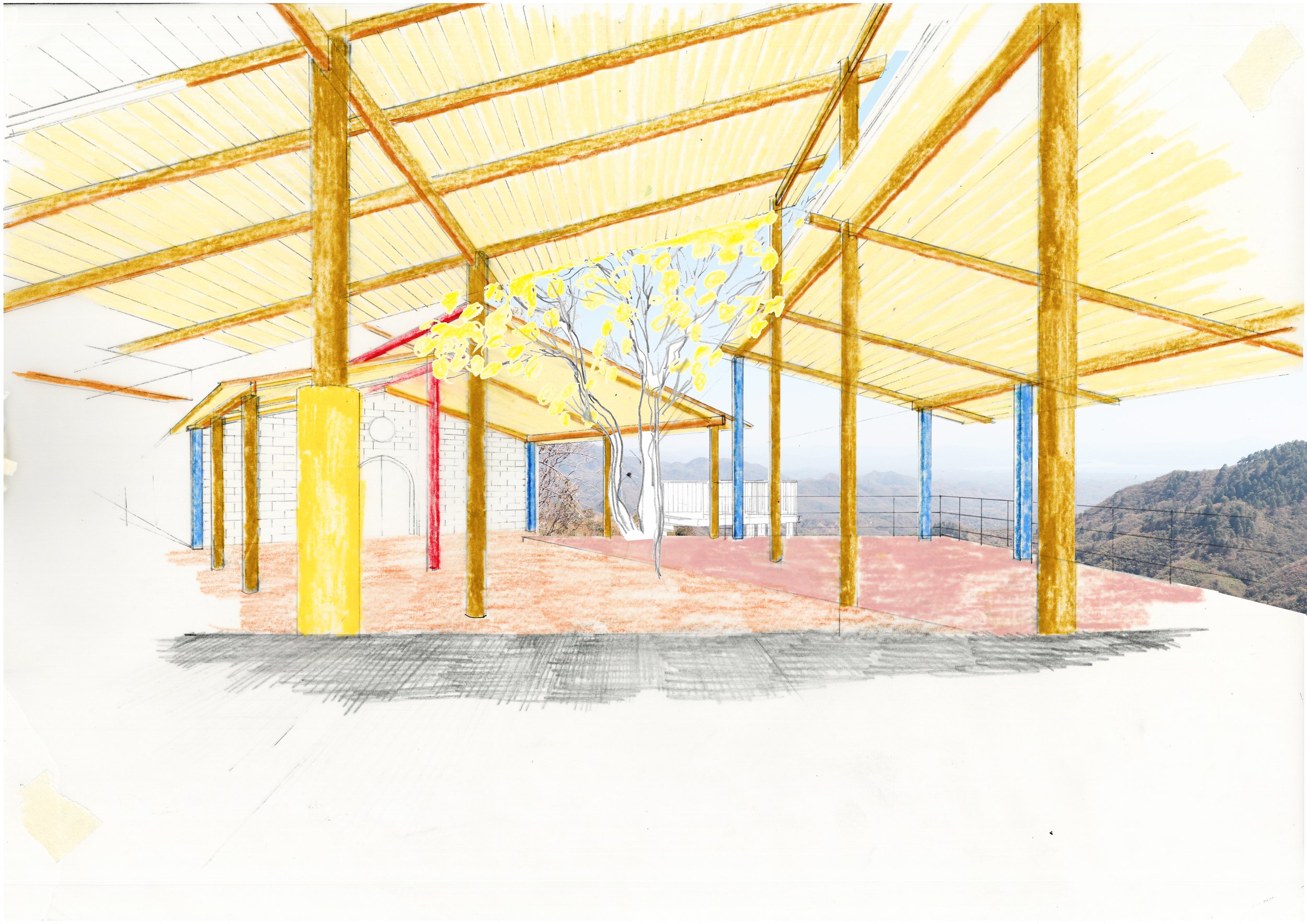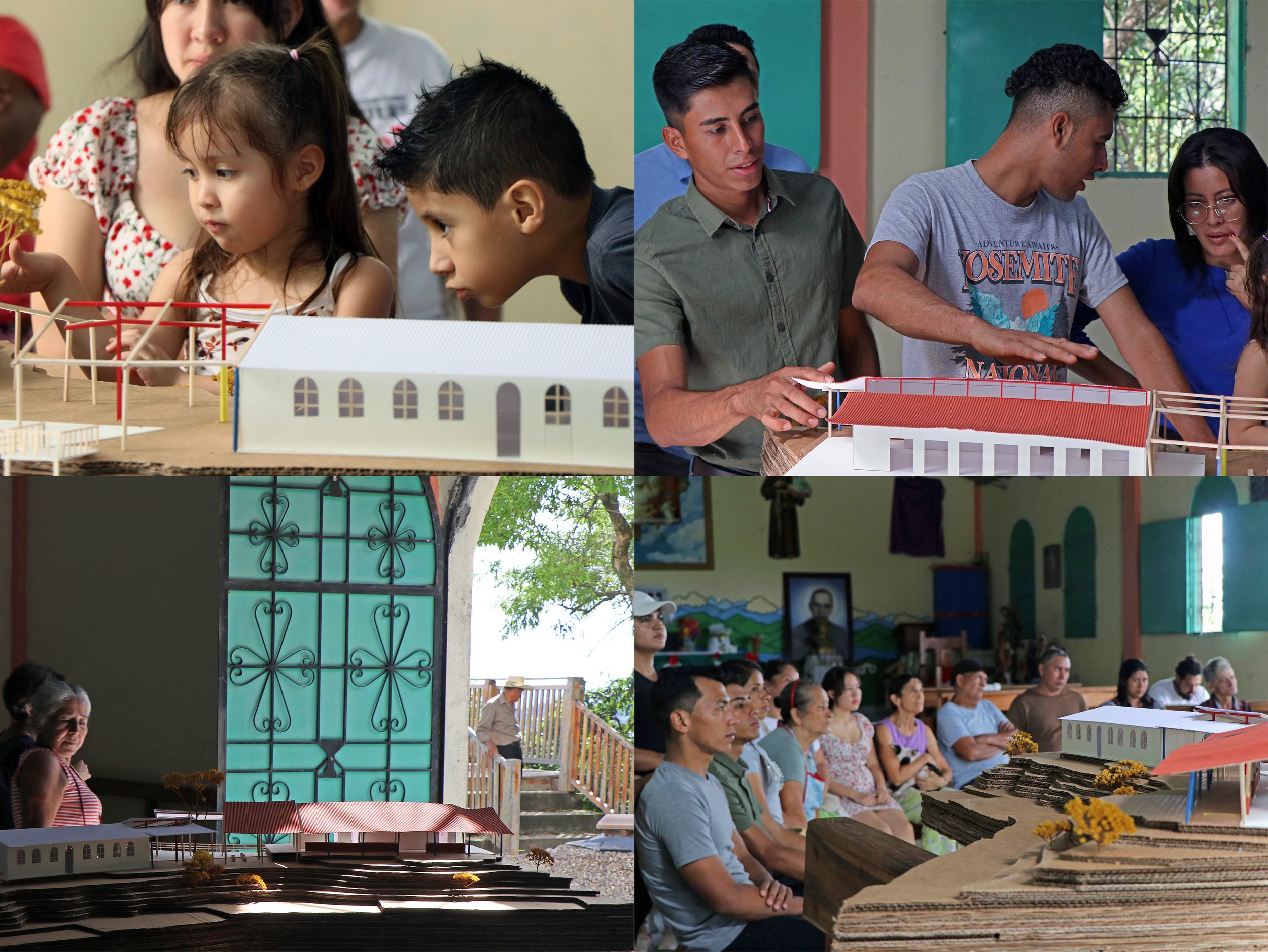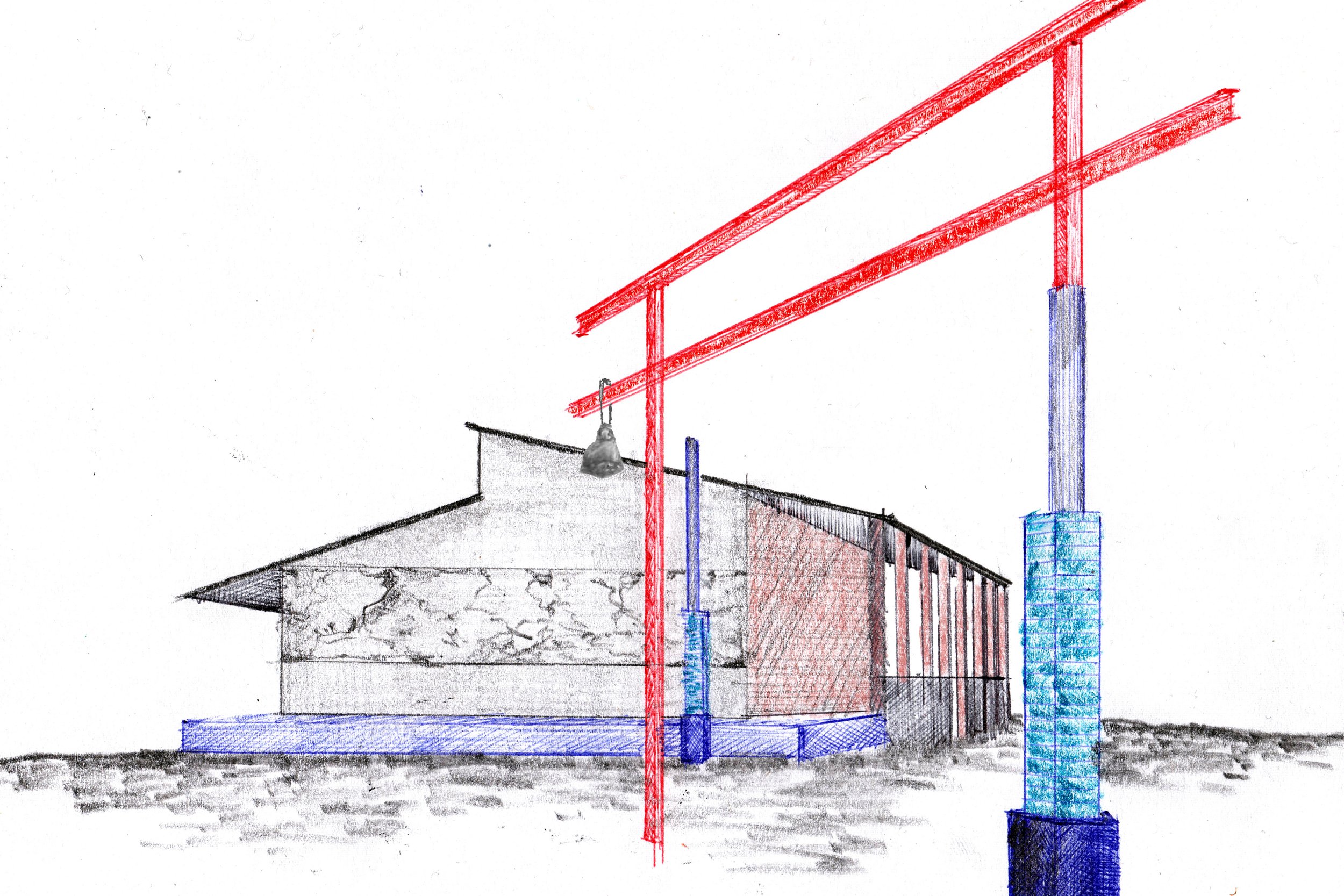Commemoration Space in El Higueral, Chalatenango
El Higueral: Massacre and Repopulation
On February 14th, 1981, the Armed Forces of El Salvador and paramilitary groups massacred hundreds of civilians in El Higueral, Chalatenango, El Salvador. Among the victims were many women, children, and elderly people who were seeking refuge from the military repression and scorched earth operations in the region. To this day, the massacre has not been acknowledged or investigated by the Salvadoran government. Estimates of the number of victims vary widely, from 200 to 500—some survivors mention that over 1,000 people had reached El Higueral when the massacre was perpetrated. Following the massacre, the civilian population was displaced in the region, continuing the constant flight from military operations, within El Salvador and sometimes even abroad. In 1988, El Higueral was gradually repopulated, despite the ongoing civil war and harsh military repression, in a movement of hope and resistance.
From Massacre to Commemoration
The annual commemorations in El Higueral, within the framework of the design project for a memorial, involves two essential aspects: the massacre that occurred in February 1981 and the repopulation that took place starting in March 1988, despite the oppression imposed by the Salvadoran government of the time.
The El Higueral massacre is closely linked to the internal migration of the population during the armed conflict. Those present in the town in 1980 came from various locations, seeking refuge in groups during military operations, believing they would be safer together. These flights are known as “guindas.”
Survivors recall the army's explicit objective at that time: through the scorched earth tactic, to eradicate the civilian population, a potential support base for the guerrillas, by burning everything in their path and killing anyone they encountered. This led people to flee, often toward rivers, which resulted in numerous massacres near them. Near the river, a bomb detonated by the army, initially claimed to be tear gas, led to the deaths of many people, making the river a symbolic site for commemoration.
In addition to the massacre that occurred in February 1981, survivors highlight the significance of the repopulation of El Higueral, which began in March 1988. During this process, people from different places came to reestablish a community in this area, an act of courage and symbolic resistance against government violence and repression. However, the repopulation was also accompanied by a high degree of violence and terror by the army, which continued to subject the civilian population to arbitrary detentions, torture, searches, bombings, and disappearances even after the signing of the Peace Accords in 1992, up until 1996.
Among the tragedies of the massacre, a particularly heartbreaking aspect stands out: the abduction of many children by the army, who were illegally sold for adoption abroad. This terrible reality, which also occurred in other places, led to the formation of the Pro-Búsqueda organization, which continues to this day, fighting to clarify these cases and bring justice to the victims. One of the survivors, Cristóbal Gutiérrez, who lost his brother in this way, was the director of this organization until 2022.
Within this historical context, the design proposal for a memorial to commemorate El Higueral aims to create a space that honors the memory of the victims and survivors, commemorates their courageous resistance, and promotes reflection on this dark chapter of Salvadoran history. Additionally, the memorial is intended to be a place of gathering throughout the year and a source of empowerment for local communities, where they feel represented and can appropriate this space as part of their identity and cultural heritage.
Introduction to the Project
In April 2022, the community of El Higueral and the Asociación Sumpul organized a participatory workshop with the goal of describing the ambitions and context of the project to design a commemorative space and create a memorial. The commemoration is held every year on February 14. The community association ADESCO, mainly composed of committed young people like Beatriz, Erlin, Eric, and José, plays an active and fundamental role in its organization.
The participants explained that the current commemoration takes place in the central plaza. However, it has been identified that the existing roof is insufficient, and a larger one is needed to provide more shade for the attendees. To achieve this, one approach considered is planting trees, which would contribute to improving the environment and the commemoration experience.
The plaza is divided in two by the main street. However, it is considered essential to keep the commemoration in the town center. There is not much traffic on that street. Additionally, there is a possibility of designing signage or small infrastructure by the river, which is an important part of the community's collective memory. Since 2022, the commemoration begins with a ceremony at this point, continuing with a mass in the central park.
During the commemoration, approximately 150 people gather in an atmosphere of active listening. Testimonies, stories, photographs, and music are shared in honor of the massacre's victims and survivors. Although multiple massacres occurred in different locations, the community considers it very important to keep the main commemoration in the center of El Higueral, in a symbolic act that transcends time and connects present and future generations with their history and their struggle for memory and truth.
The project to create a commemorative space and the memorial aims not only to honor the memory of the victims and the resistance of the survivors, repopulating communities, and the community but also to foster a gathering place throughout the year for the area's residents, providing a place for reflection, healing, and discussion on historical and current issues.
September 2022: Initial Reflections
During a participatory workshop in September 2022, the first architectural and programmatic analysis for the memorial project in El Higueral was presented. Two main themes emerged in the discussion:
First, it was identified that the commemoration takes place in two different locations: a ceremony at the stream, followed by a procession that ends with a mass, music, and testimonies in El Higueral park. Therefore, it will be vital for the project to consider these different points and integrate them harmoniously to offer a complete and meaningful commemorative experience.
Second, it was highlighted that El Higueral park was recently renovated and now features children's playgrounds, an event platform, and a small kiosk, all located in a flower-shaped cobblestone area that is in good condition and fully functional. Therefore, modifying this space is questioned, as it would not be possible to carry out a project here without undoing recent efforts. Consequently, other significant locations in the center of El Higueral were considered for organizing the memorial and the commemorative space.
Several proposals emerged in this regard:
First, it is suggested that the stream area, with its large round rocks, could be artistically intervened in relation to the massacres, without significantly altering its topography and existing plants, to pay tribute to the historical memory of the place.
Second, the procession is also presented as an opportunity to add symbolic value through an artistic performance that enriches the meaning and experience of this important moment.
Third, the proposal for the memorial and the commemorative space focuses on the area between the church and the Casa Comunitaria, which is currently neglected, except for a small panoramic platform. This space benefits from an exceptional view. The idea is to unite the roofs and facades of the church and the Casa Comunitaria, improving and renovating the latter to better align with its potential for the community. The vision is to create a spiritual and community center that serves as a natural complement to the existing civic and recreational park. The proposal seeks to give this space a more meaningful purpose, making it a central place for the community where memory, spirituality, gathering, and community activities come together in one location.
January 2023: Second Design Phase
Between September and December 2022, international fourth and fifth-year students from the Faculty of Architecture at KU Leuven conducted an in-depth study as part of an optional course called “Conjectural Architecture – Surviving Memory,” led by Harold Fallon and supported by Evelia Macal, Thomas Montulet, Johannes Berry, and Steven Schenk. The purpose of this course was to explore different design approaches through graphic research. The students assigned to the El Higueral project were Ketevan Gogodze, Efe Han, Justyna Pawelczak, Gabriel Schumacher Gutierrez, and Unai Balerdi Murias.
During their investigations, it became clear that the space defined by the roof and facade of the January 2022 proposal was too narrow to adequately accommodate all the participants in the commemoration. Therefore, the idea of continuing the roofs was questioned, and a broader, more open form was explored for the facades. During this stage, the idea of using columns as architectural elements to create an open space articulated with the existing structures, such as the gallery, emerged, while also serving as supports for symbolic elements.
Subsequently, the architects implemented a more applied architectural proposal with the support of AgwA, seeking to synthesize the idea of the continuity of the roofs and a larger space with a hexagonal shape. Continuity was an important aspect to ensure that the church, Casa Comunitaria, and commemorative space formed a larger, more recognizable ensemble within the town, similar to the central park.
In January 2023, this new proposal was presented to the community, along with artistic references such as the work “Ríos de gente” by Guatemalan artist Regina José Galindo. Additionally, Miguel Mira, a sculptor and professor at the Escuela de Arte de la UES, suggested creating petroglyphs on the rocks of the stream. These petroglyphs would feature drawings alluding to ancestral and recent memory, such as the massacres and repopulation.
It was also proposed to plant Cortez Blanco trees (Tabebuia Caraiba), whose yellow blossoms in February coincide with the date of the commemoration. These trees would be planted along the street connecting the stream and the park, following the route of the procession. Additionally, the community suggested creating a mural on the stone known as "the garrobo stone." The need to prioritize actions was discussed, given that many parallel projects were underway.
In February 2023, Evelia Macal and Harold Fallon had the opportunity to participate in the commemoration, accompanied by project collaborators and representatives from various communities. Roberto Urbina conducted an additional topographic survey, providing more detailed information about the contour lines.
August 2023: Third Design Phase
Following the January 2023 workshop, a more detailed proposal was developed with a particular focus on the structure, aiming to create a visually simple appearance despite the hexagonal shape. However, it became evident that the irregular shape implied too much complexity.
The new proposal involves extending the roofs of the church and the Casa Comunitaria, but without seeking formal continuity between them. On the contrary, the angle between the buildings is used to highlight the disjunction of the roofs. This allows for flat roofs to be created, simple in form and at different heights. On one hand, this allows for natural light and excellent ventilation. On the other hand, an open triangular space is formed at the center of the composition, where a Cortes Blanco tree will be planted.
This new orientation is used to raise half of the Casa Comunitaria roof by about fifty centimeters and open the west facade. These two modifications improve the ventilation of the multi-purpose rooms and take advantage of the impressive view that encompasses almost the entire country. The existing podium adjacent to the Casa Comunitaria is maintained to facilitate and guide the commemorations.
The exterior columns are made of concrete and resemble the columns of the Casa Comunitaria. Other columns are made of wood, while two steel columns support the church's bronze bell. Additionally, two columns are covered with ceramic pieces bearing the names of the massacre victims and survivors. This set of columns invites reflection on the colors that can bring joy to the space, as it is not only a solemn place but also a community space for life and gathering that encourages socialization and both formal and informal encounters.
With the new topographic information, the need to build a platform to expand the commemorative area became apparent. The staircase providing access to the houses located below the Casa Comunitaria has been relocated.
At the beginning of August, a scale model (1/50) was created by architecture students from the Universidad Centroamericana José Simeón Cañas as part of their Social Service, along with scale models for museum projects in Las Vueltas and Arcatao. The group of students consisted of Diana Carolina Granados Marroquín, Luis Alejandro Peña Flores, Gracia María Guardado Reyes, Anamaría Esmeralda Alfaro Rivera, Gabriela Concepción Urrutia Marroquín, Marilyn Hilary Mérida Montano, Wanda Sofia Campos Santamaría, Moisés Esau Aguilar Hernández, Valeria María Cienfuegos Alvarenga, Fátima Aracely Elías Turcios, Mariana José Castillo Beltrán, Paola María Argueta Mena, Karla Daniella Ayala Lopez, José Luís Arriola Villalta, María José Rivas Hernandez, Valeria Daniella Quevedo Barrera, under the supervision of professors Alexander Renderos and Karina Mora, collaborating with prof. Harold Fallon, Evelia Macal and Thomas Montulet.
The results of this phase were presented and discussed during a participatory workshop in August 2023, and the scale model was left in El Higueral for community communication and participation.
2024: In Search of Realization
In 2024, plans were refined, and reflections on the realization of the works began. The possibility of microfinancing is being considered to prioritize projects such as tree planting and the creation of memorial columns. There is also a consideration for the community space, connected to the church and the covered commemorative space, to receive cultural programming, possibly linking it with the network of Historical Memory museums in Chalatenango.
